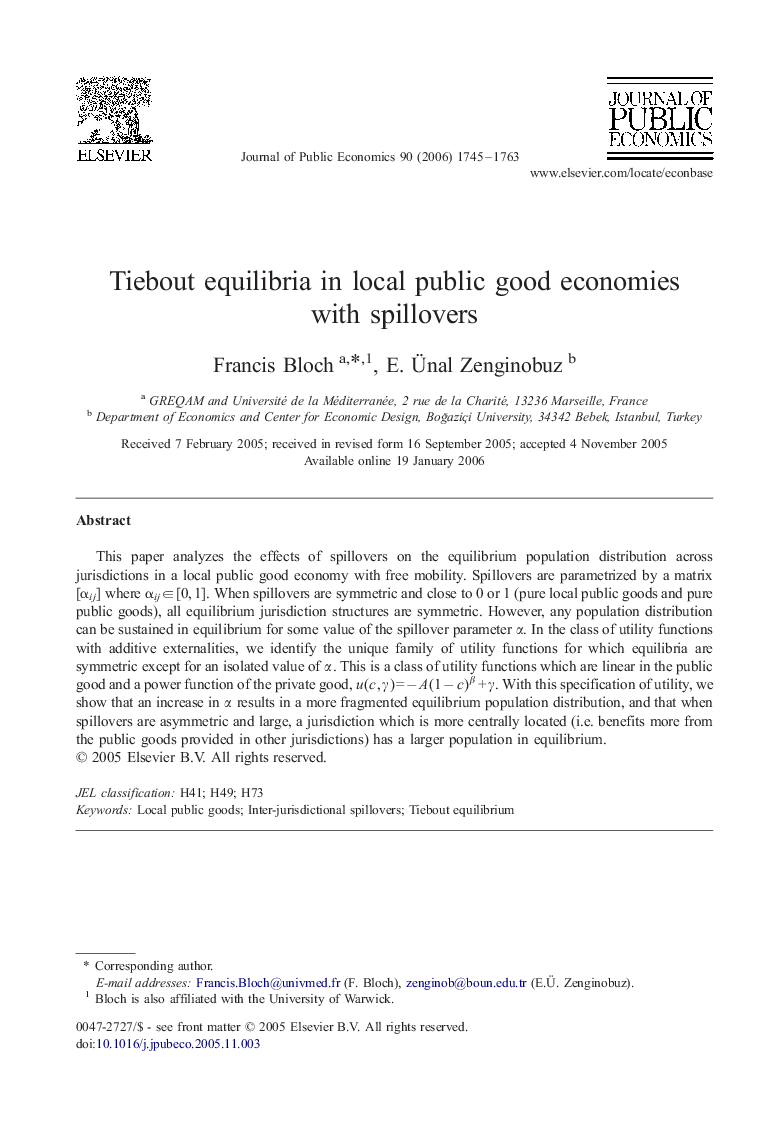| Article ID | Journal | Published Year | Pages | File Type |
|---|---|---|---|---|
| 970398 | Journal of Public Economics | 2006 | 19 Pages |
This paper analyzes the effects of spillovers on the equilibrium population distribution across jurisdictions in a local public good economy with free mobility. Spillovers are parametrized by a matrix [αij] where αij ∈ [0, 1]. When spillovers are symmetric and close to 0 or 1 (pure local public goods and pure public goods), all equilibrium jurisdiction structures are symmetric. However, any population distribution can be sustained in equilibrium for some value of the spillover parameter α. In the class of utility functions with additive externalities, we identify the unique family of utility functions for which equilibria are symmetric except for an isolated value of α. This is a class of utility functions which are linear in the public good and a power function of the private good, u(c, γ) = − A(1 − c)β + γ. With this specification of utility, we show that an increase in α results in a more fragmented equilibrium population distribution, and that when spillovers are asymmetric and large, a jurisdiction which is more centrally located (i.e. benefits more from the public goods provided in other jurisdictions) has a larger population in equilibrium.
